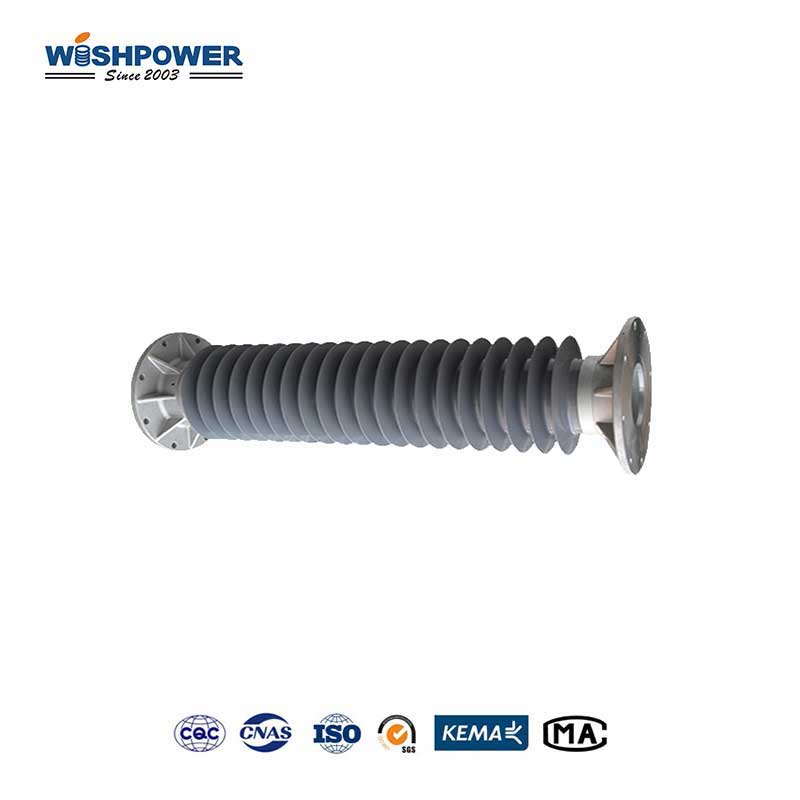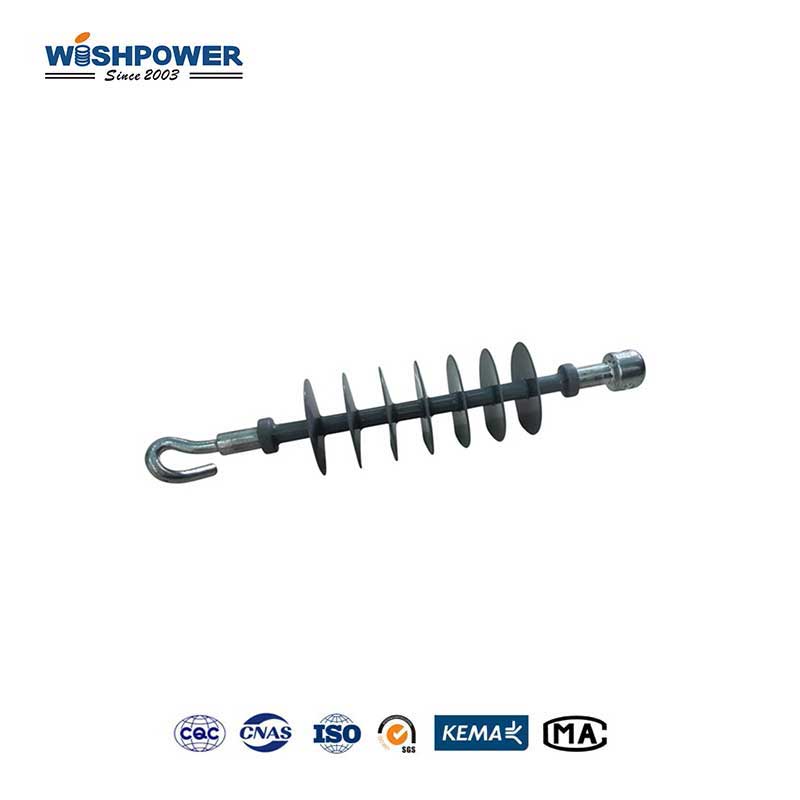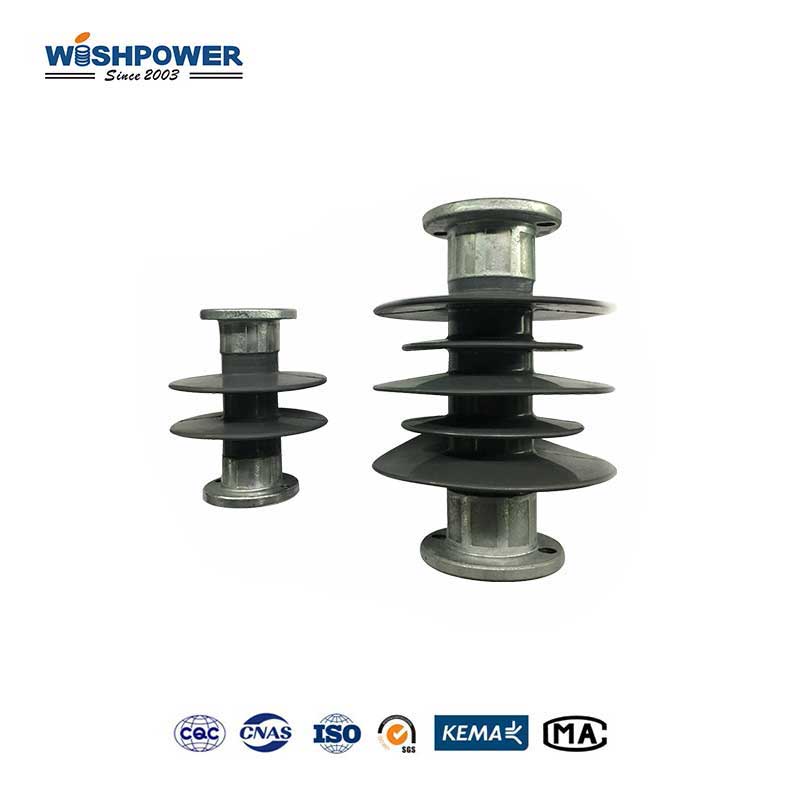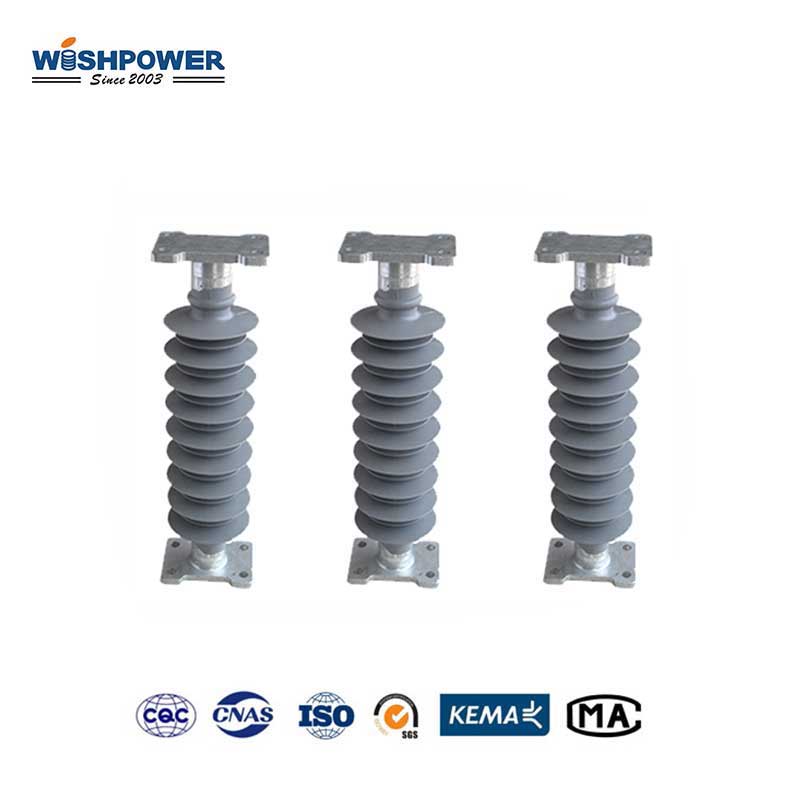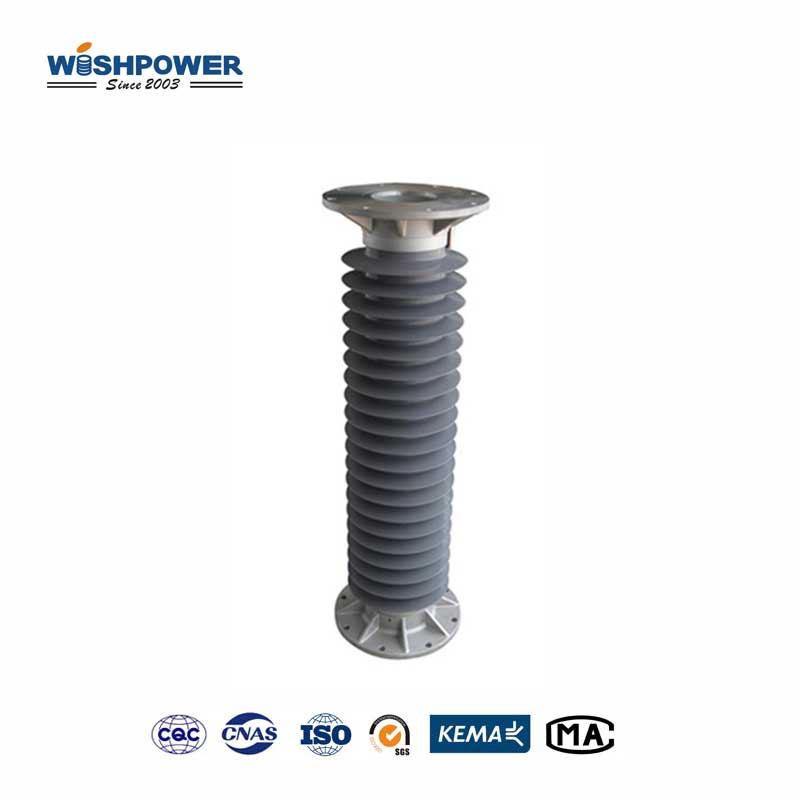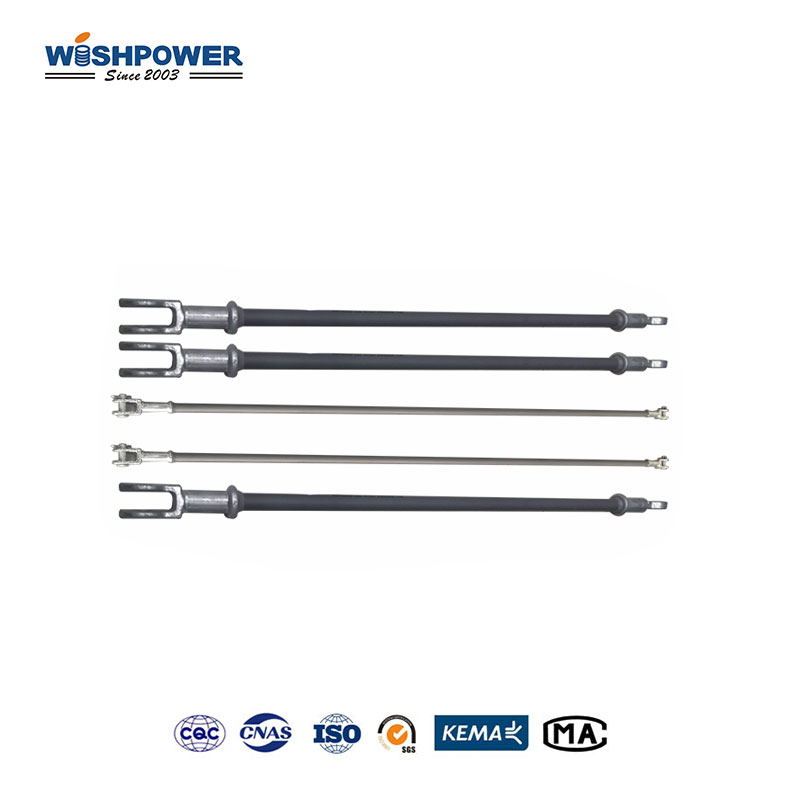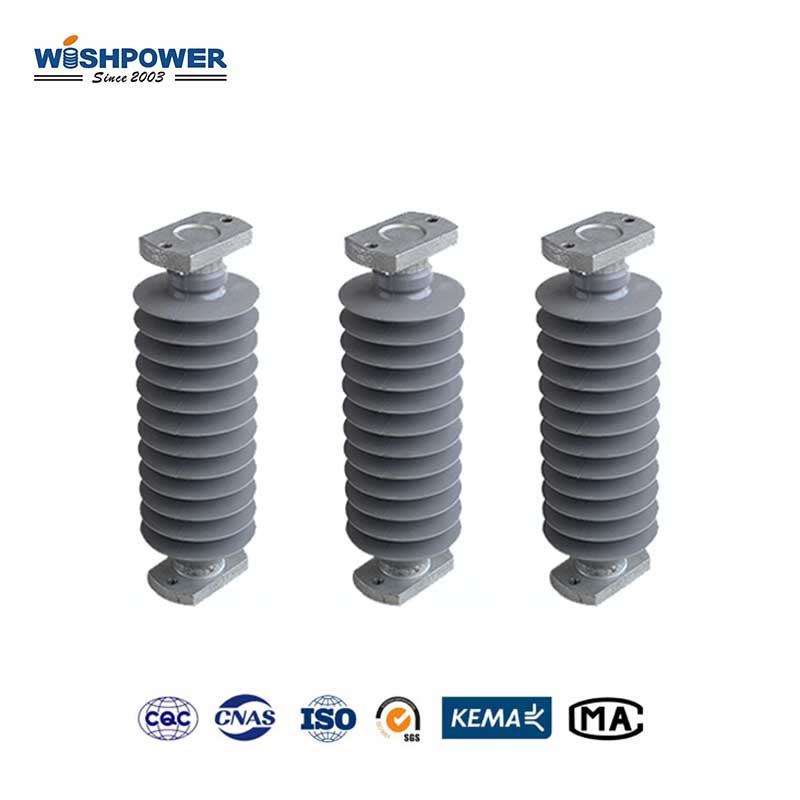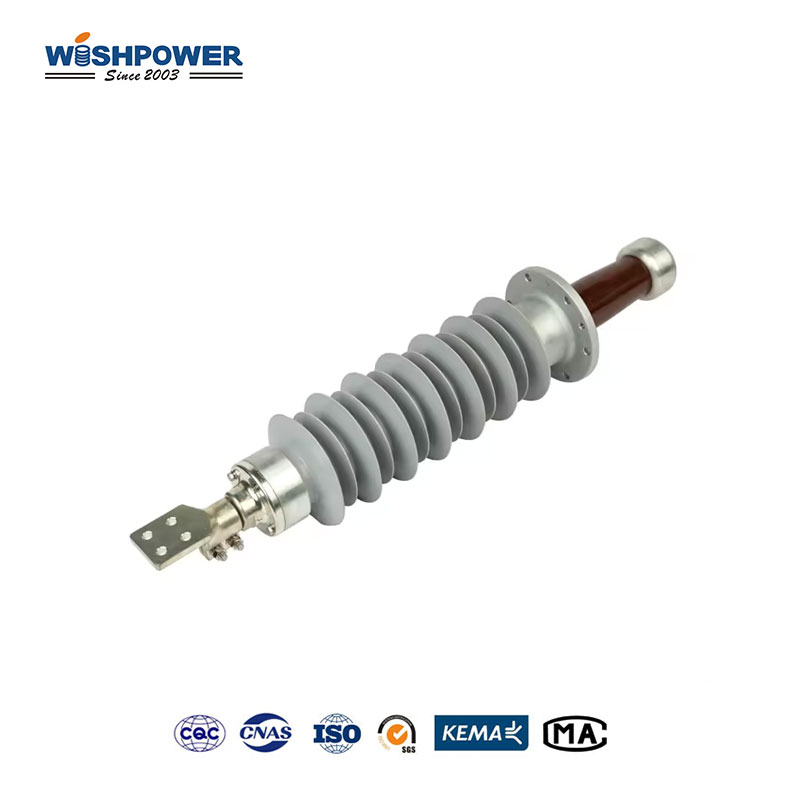Specification
| Type of Insulator |
FK-110(126)/(8/12.5) |
| Specified Voltage |
110/126 kV |
| Specified Bending Withstanc Load |
8/12.5 kN |
| Section Length |
1350 mm |
| Min. Arcing Distance |
≥1070 mm |
| Tube Inner Diameter |
115 mm |
| Big Shed Diameter |
284 mm |
| Min. Nominal Creepage Distance |
4370 mm |
| Lightning Impulse Withstand Voltage(Peak Value) |
≥550 kV |
| Power Frequency Withstand Voltage Min.Wet(RMS) |
≥245 kV |
| Reference Weight |
50 kg |
The table above is just one of our product parameters. If you want more information, please get in touch with info@wishpower.net
What is the Composite Polymer Insulator?
Commonly referred to as Polymer Insulators, Composite Polymer insulator is a modern form of electrical insulator, which would consists of a combination of materials to enhance performance and durability, in various environments. The core is the composite glass fiber reinforced resin rod, covered with an elastomeric sheath and weather-proof polymer casing of silicone rubber. This design aims to resist environmental challenges including moisture, pollution, and UV radiation, and thus makes an efficient choice at places where conventional ceramic or glass insulators may encounter pollution or mechanical stress-related problems. Installation is greatly simplified because it is much lighter than traditional materials, minimizing the load experienced by the transmission structure. In addition, its flexible structure is well suited to withstand the mechanical stresses that result from vibrations or rapid temperature changes that make more rigid materials brittle or crack. Primarily designed for high voltage transmission and distribution applications, the potential lifespan of such an insulator is notably longer than traditional insulators, and less maintenance is required to increase the reliability of the power grid.
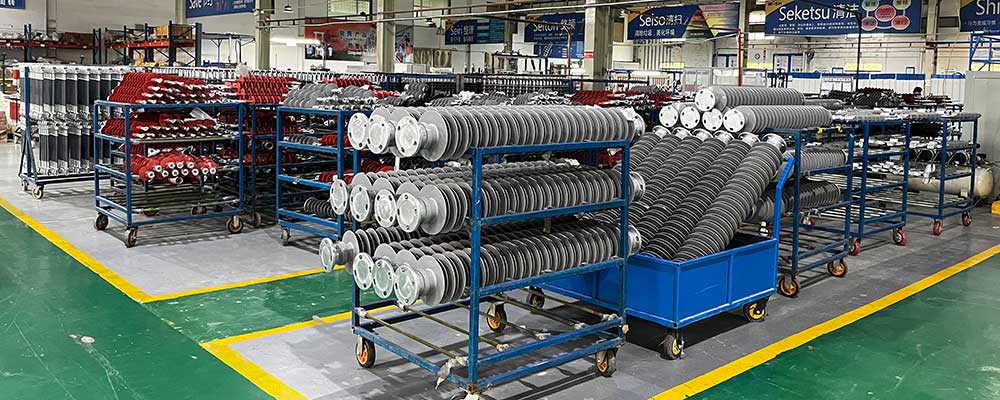
Are composite insulators and polymer insulators the same?
Yes; “composite insulator” and “polymer insulator” are usually the same type of insulator and almost always can be understood to be the same thing. They all refer to insulators made of composite materials and polymer shells, lightweight, pollution, aging, and hydrolysis resistant, and are used widely in power transmission and distribution lines. While differences in some professional contexts may be subtle. In other words, a composite insulator stresses the composite of a core rod (often glass fiber reinforced resin), sometimes the polymer shell, while a polymer insulator stresses the shell material as a polymer (usually silicone rubber). The two are almost alike in design and application and most of the time can be thought of as interchangeable.
Composite polymer insulators uses
- High-voltage transmission lines:
The silicone rubber composite insulator is widely used in high-voltage transmission lines (usually 110 kV and above) for its superior resistance to environmental conditions, moisture, pollution, and UV radiation. They are lightweight, reduce the load on transmission towers, and provide flexibility to work in earthquake-prone areas.
- Distribution lines:
It gives reliable insulation and reduces maintenance costs on medium and low-voltage distribution lines. With its design resistant to pollution and pollution-related flashovers, it is particularly the choice for coastal or industrial areas where pollution in the atmosphere is common.
- Substations:
It is also increasingly used in substations to provide insulation to switchgear, transformers, and other high-voltage equipment. Preventing flashovers in high-stress environments they help maintain safety and operating efficiency.
- Railways and electrified transportation:
The insulators also support railway electrification systems overhead lines and provide electrical insulation, wherever necessary, against extreme temperatures and vibrations.
- Urban and coastal areas:
For their hydrophobicity and pollution resistance, they are preferred in areas with high humidity, salt pollution, or industrial pollutants. In urban areas they are used to mitigate the risk of pollution flashovers, and in coastal areas where salt will cause severe corrosion problems to other insulation materials.
- Renewable Energy Facilities:
In solar and wind farms, durability and low maintenance requirements make them well-suited for transmitting and distributing lines. Because of their weather resistance, they are suitable for outdoor exposure in renewable energy facilities.
Where to buy composite insulator?
Wishpower specializes in the design and manufacturing of reliable composite insulators appropriate for a variety of electrical applications—from high voltage transmission, through distribution and to substation environments—with a targeted focus on innovative design and advanced manufacturing processes. The silicone composite insulator from Wishpower stands out for its long life due to low maintenance and design for efficiency in diverse operating conditions. Please contact info@wishpower.net for inquiries or to buy composite insulators from Wishpower.
About Wishpower

Certificate

Hot Tags: Composite Polymer Insulator, Composite Insulator, China, Thailand, manufacturers, ISO factory, wholesale, KEMA, high quantity, best, price, low to high voltage






